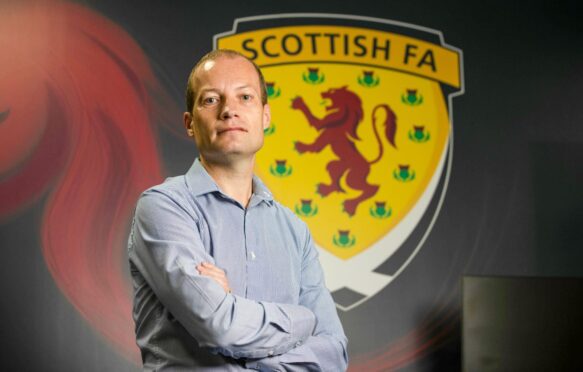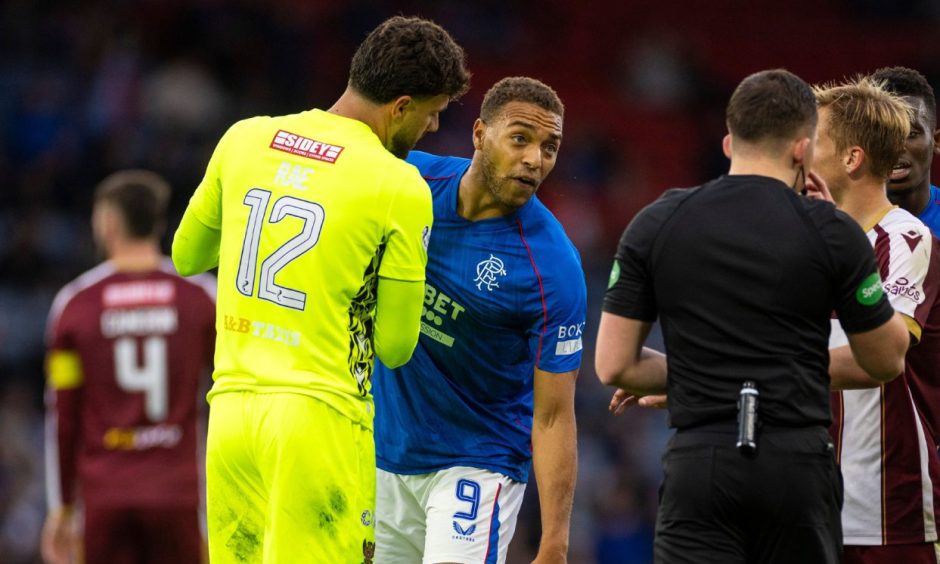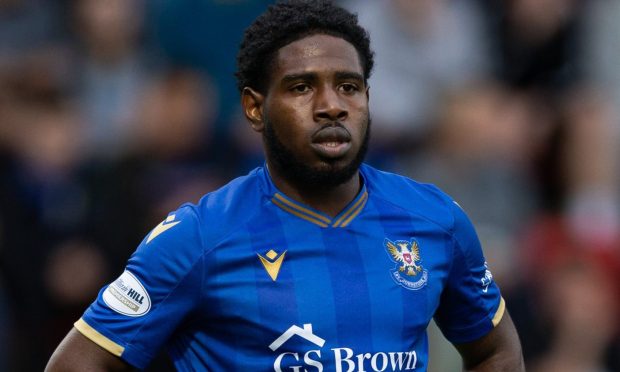The referee in St Johnstone’s League Cup loss to Rangers exhibited “bad body language” leading up to the Gers’ controversial opener.
That’s the view of SFA head of refereeing, Willie Collum, who was speaking on the first episode of the governing body’s new ‘VAR Review’ YouTube series.
On-field referee Matthew MacDermid sparked fury in the Perth ranks after appearing to blow his whistle for a foul on Saints defender Jack Sanders, an hour into a keenly fought contest at Hampden on August 17.
However, after VAR intervention, MacDermid was instructed to review the incident and ended up awarding a goal to Rangers.
Perth players swore they had heard MacDermid blow for a foul – and thus stopped playing – before Dessers fired home.
Refs chief Collum admitted that by putting his whistle to his lips, MacDermid’s body language indicated a foul was in the post.
That, he said, is something the whistler will need to work on in future.
But Collum insisted the right decision had been reached in awarding the goal, despite lingering claims from the Saints camp the referee had sounded his whistle.
Analysing the incident, he said: “The starting point for us is we coach the referee here – and the referees generally – about good body language.
“Here the referee probably doesn’t display good body language because his body language, when the challenge is made on the edge of the penalty area, [shows] everything is edging towards a free-kick, body language-wise.
“However, even though his body language is showing that, he correctly delays the whistle, he correctly communicates so the VAR is aware of what he intends to do if a goal is scored and, when the ball hits the net, he then blows the whistle for what he deems to be a defensive free-kick, punishing the Rangers player for a challenge.
“The VAR then go into a check, of course, and they quickly come to a conclusion that, in fact, there is no infringement.
“I would also say that this is a normal footballing contact. Some people have said to me: ‘Would it be a penalty if the attacker had gone down?’ For me, this is normal footballing contact. It would have been play on.”
Collum also admitted the check took longer than he would like, but insisted that over the piece, this was a case of VAR doing its job properly.
“For us, apart from the body language, in terms of the whistle, in terms of the delay, in terms of the communication with the VAR, the correct process was followed and, ultimately, for us, the correct decision was reached in the end.”













Conversation